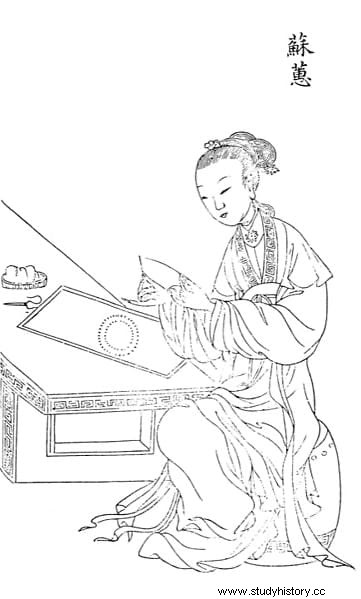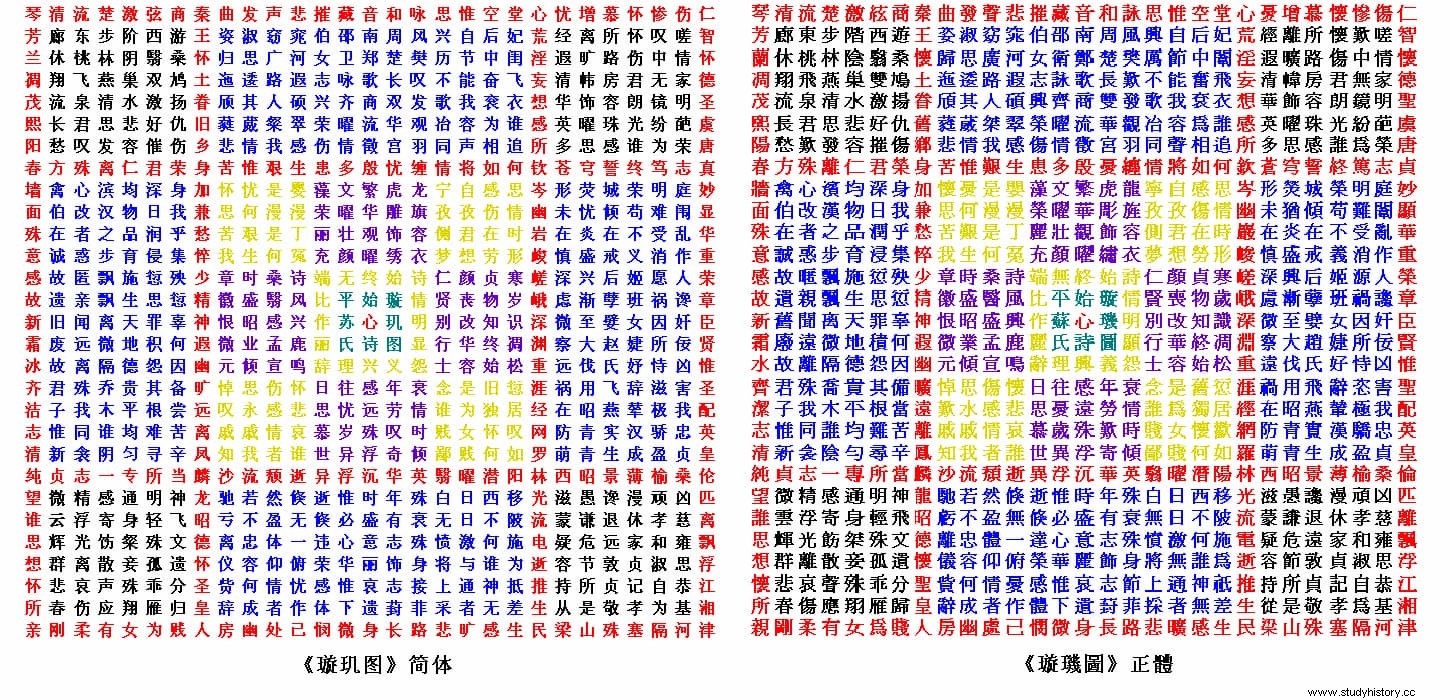It sounds strange that a Chinese poem from the 4th century AD. carry the word calibrator in its title, but it really is the most accurate translation we can think of for what is also called Xuanji tu in Chinese (璇玑圖, Rotating Sphere Image ).
It is a poem written by the poetess Su Hui (also known as Ruolan) and dedicated to her husband, composed in the form of a 29 by 29 character grid, and can be read in different ways and in different directions, allowing that more or less other 3,000 smaller poems can be formed that, yes, also rhyme.

What's more, the outer edge of the grid forms a single circular poem, the first and longest of its kind known to date.
In total it consists of 841 characters arranged within the grid, forming a palindromic poem that can be read in all directions, and poems always come out in which the second line of each couplet rhymes with the second line of the next.
Only the central character (心 xin) which means heart it is not part of any of the poems.
It seems that the original was woven in silk brocade. It circulated widely during the Middle Ages in China, but the first printed version dates back to the 10th century. Of course, there is a legend about how Su Hui composed it:
It is said that Dou Tao, who was the governor of Quinzhou prefecture or district, was exiled to the desert in Dunhuang, away from his wife, his Hui, because she had disobeyed an order.
There, although he had sworn never to marry anyone again, he did, forgetting about her Hui. So when she heard about her Hui composed the circular poem, she wove it into a piece of brocade with silk threads of five colors and sent it to him.

The poem in the form of a palindromic grid was only understandable to Dou that, when he read it, he left his new wife in the desert and returned with his Hui.
Su Hui's poem is considered to be the most complex example of a palindrome poem written so far. Su Hui lived in the ancient Qin kingdom (351-394 AD), in the city of Baoji in what is now Fufeng Township in Shaanxi Province. Right at the end of the northern branch of the Silk Road. Third daughter of Su Daozhi, at the age of 15 she married Dou Tao, who was governor of the Quinzhou district in Gansu province.

At some point Dou Tao was assigned to another place as punishment, presumably in the Gobi desert. In those days it was common for a man, especially a civil or military authority, to have several wives and concubines, although Dou Tao had promised Su Hui not to take other wives. Despite this, as soon as he arrived at his new position, he took a new wife, and the rest coincides practically to the letter with the legend.
However, it is not very clear how Dou Tao managed to return from exile so easily. Perhaps it was not an exile for punishment but a simple transfer or even a promotion.
